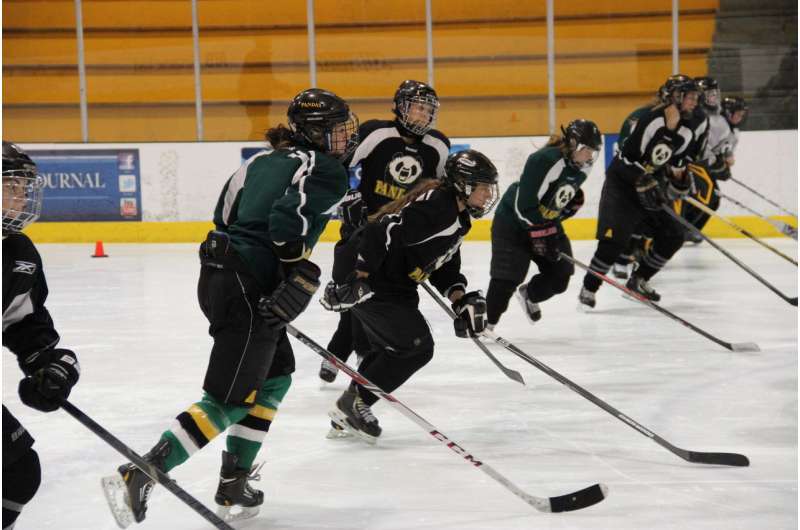Physiological differences in women's ice hockey in Sweden and North America

Female ice hockey players from North America have better financial conditions as well as greater leg strength and running acceleration than female ice hockey players from Sweden, who in return have less body fat. This according to Tommy Henriksson in his doctoral dissertation at Umeå University in Sweden.
"The noticeable physiological profiles that separate Swedish from North American female ice hockey players are probably reflected in the differences in their training approach. That in effect may derive from various socio-cultural and financial conditions," says Tommy Henriksson.
For his doctoral dissertation, Tommy Henriksson has based his work on physiological measurements and surveys involving 119 female ice hockey players from Sweden and Canada, as well as qualitative interviews with eight coaches in Sweden, Canada and the USA.
The results show that the North American players had greater maximum isometric leg strength, greater running acceleration and perform better in single leg standing long jumps. They also have better anaerobic endurance on ice. The Swedish players instead had less body fat, more lean mass and greater aerobic fitness.
Tommy Henriksson shows that field-based assessments are just as efficient as laboratory assessments when it comes to predicting female ice-skating performance.
"It's possible that the Canadian training profile is better suited for ice hockey performance than the Swedish model as it turned out single leg testing and standing long jumps are much more strongly correlated with ice-skating," says Tommy Henriksson.
Tommy Henriksson also points out the great differences in financial support for female hockey players in the USA and Canada in comparison to Sweden. Female hockey players in North America can receive student finance through scholarships for much longer than in Sweden where the educational system only provides support for female ice hockey players until they turn 19.
"Hopefully, the results shown in this dissertation can contribute to a more optimal use of the scarce resources available in Swedish female ice hockey to improve performance. But it goes without saying that financial and structural support are factors that need to be improved in order for female ice hockey to develop further," says Tommy Henriksson.















